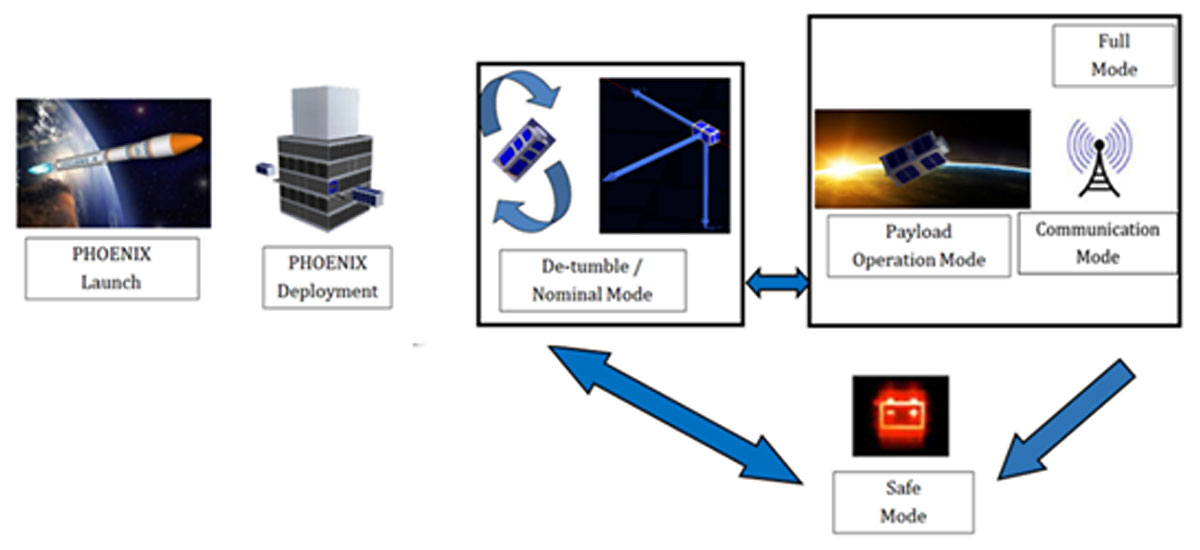Mission statement
The mission of the PHOENIX is to fulfill the QB50 in-situ lower thermosphere measurement mission and to measure solar EUV flux. The measurement of the solar EUV flux will augment the QB50 mission. The task of the NCKU team is to design, manufacture, assemble, integrate, test, and operate the PHOENIX double CubeSat to accommodate the following payloads for atmospheric studies.
- Ion and Neutral Mass Spectrometer;
- Thermistors;
- Solar Extreme Ultraviolet (EUV) Sensors.
The INMS and thermistors are part of a set of sensors provided by the VKI project to several QB50 teams while the Solar EUV Sensors are locally made at NCKU.
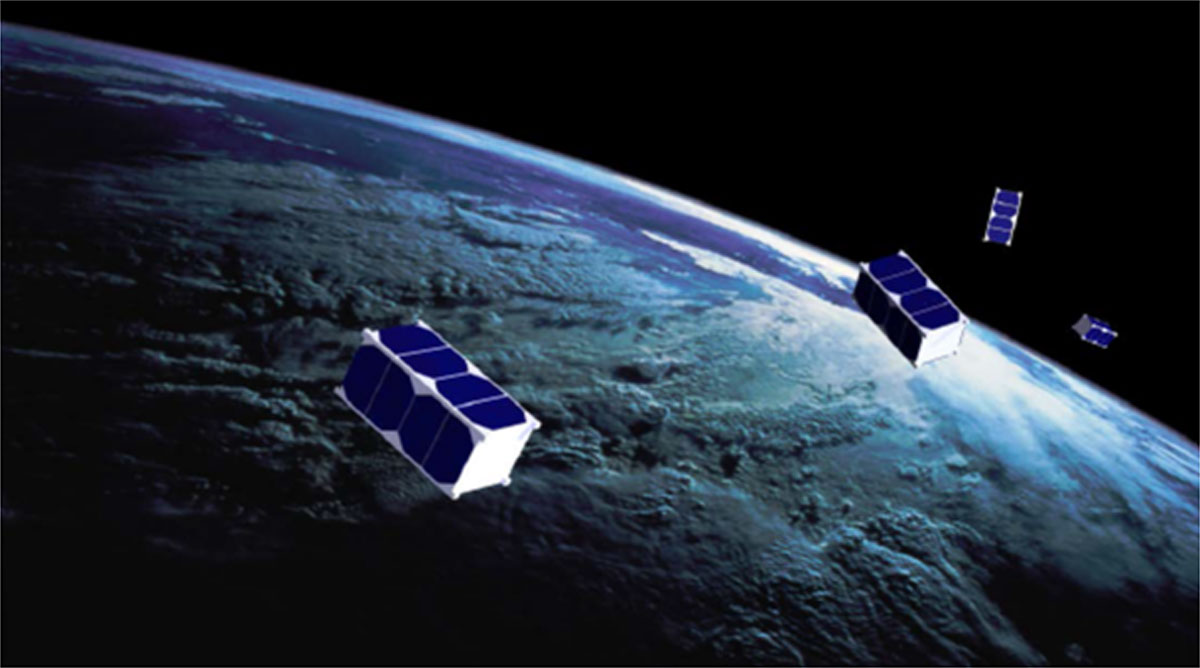
Scientific and technical objectives
- To fulfill the QB50 in-situ lower thermosphere measurement mission.
- Increase the science return of the QB50 mission by providing solar EUV flux measurments.
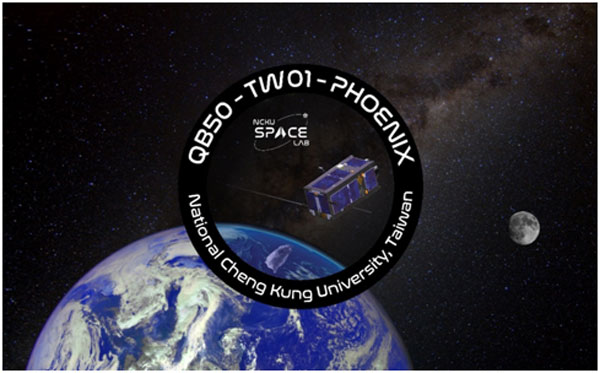
Main mission parameters
- Mission duration
- 3 months
- Orbit type
- Low earth orbit
- Altitude
- 402 km x 403 km
- Inclination
- 51.63deg
- Satellite type
- Cubesat (2U)
- Total satellite mass
- <= 2 kg
- Ground station
- NCKU ground station, Tainan, Taiwan
- Launch rocket
- Atlas-5(401)
Spacecraft bus components
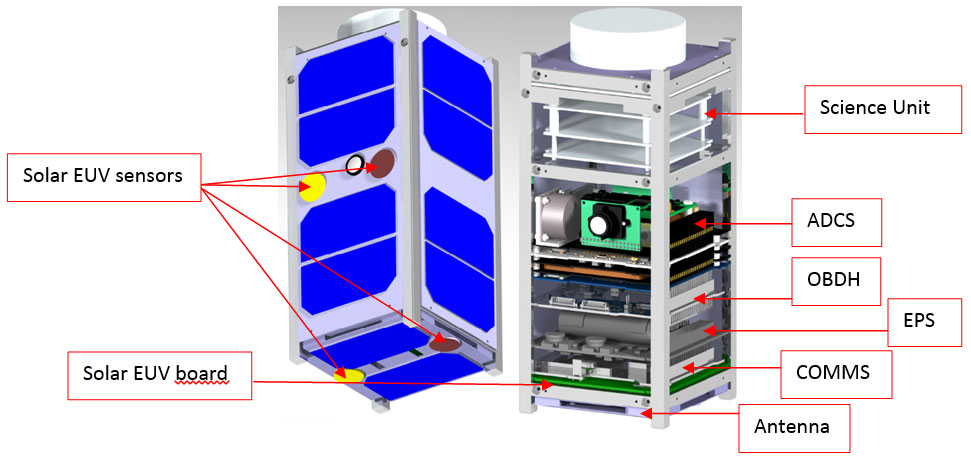
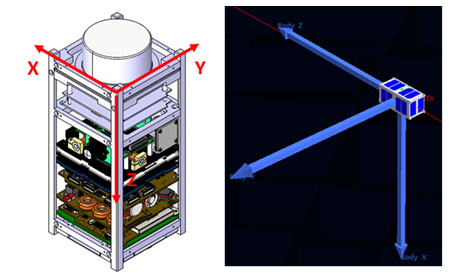
PHOENIX is a 2U CubeSat (10cmx10cmx20cm) whose mass fits in the required 2kg. The subsystems have been placed in the satellite in order to protect them from solar radiation and to maintain a thermal environment suitable for all components. PHOENIX’ is orbiting with the INMS sensor in fly direction. (-Z direction) PHOENIX consists of 5 subsystems which are each responsible for individual tasks such as energy conversion, data handling or communication. Most of the subsystems which PHOENIX will use are COTS (commercial of-the-shelf) which are procured from companies specialized in CubeSat technologies.
In order to fulfill its mission, the PHOENIX satellite will carry three different payloads:
- Ion and Neutral Mass Spectrometer (INMS);
- Thermistors;
- NCKU Solar EUV Sensors.
The INMS and thermistors are part of a set of sensors provided by VKI while the Solar EUV Sensors are locally made at NCKU.
The Ion and Neutral Mass Spectrometer (INMS) is a miniaturised analyser designed for sampling of low mass ionized and neutral particles in the spacecraft ram direction with the instrument resolutions optimized for resolving the major constituents in the lower thermosphere.
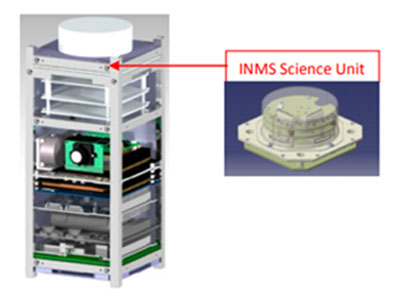
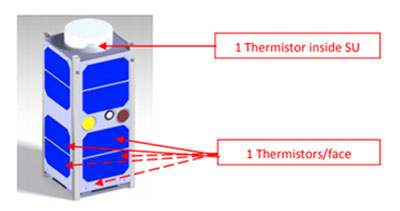
The surface of the satellite reflects the molecules of the surrounding atmospheric environment. These molecules form a reflected beam, which modify the properties of the surrounding atmosphere in the vicinity of the spacecraft. The reflected beam properties are largely influenced by the surface temperature; therefore, the accurate knowledge of surface (sensor) temperature is essential. The thermistors would be useful for getting more accurate science data measurements as well as for the thermal and power management of the satellite.
Solar EUV irradiances are responsible for creating the terrestrial ionosphere and heating the thermosphere. An accurate knowledge of this flux is, therefore, necessary for aeronomical studies of the upper atmosphere. The EUV component of the solar spectrum is highly dependent on solar activity, causing some of the large variations in the thermospheric temperature and other atmospheric parameters. Changes in solar activity affect the ionosphere directly through the ionizing EUV radiation.
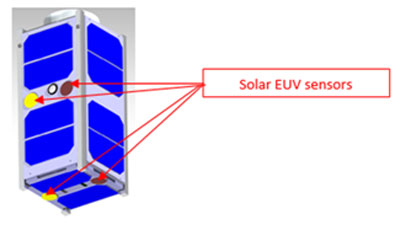
The structure in this case is a 2U CubeSat structure from ISIS which is based on the CubeSat specification as well as the QB50 requirements respectively. This means that the structure limits the dimensions and mass properties so that 50 CubeSats can be launched within the limited space and weight margin of the launch vehicle. The structural subsystems take care of these limitations and hence control the order.
The ADCS is responsible for detumbling the satellite after deployment, pointing the satellite in a favourable attitude to meet the mission requirements as well as for recovering it from any spin ups during the mission. It is also responsible for determining the satellite attitude. Since the satellite will be down to at least 200 km from its initial launch altitude at 350 km, the atmospheric disturbances will be more severe especially at low altitude. Attitude control is required to stabilize the satellite and minimize the influence of drag. This will allow for more atmospheric data to be gathered.
The EPS must generate power with solar cells and store in batteries, as well as regulate voltage for distributing power to subsystems and payloads. In different mode, EPS also must have ability to switch off the non-necessary instruments to save power. Most important of all, the CubeSat must be power OFF during the entire launch and ensure separation-switch can successfully work when CubeSat is deployed.
C&DH is the heart of a satellite, it oversees command validation and execution, data reception, store, and downlink, and maintain satellite in health. OBC (on-board computer) is also the interface for managing the communication of subsystems and payloads. Every payload has its own data handling electronics, OBC is the leader who send I2C messages to the payloads. Payloads receive I2C messages and decode it, then run proper actions according to a pre-set table. The OBC controls the on/off status of payloads and collects the science package from them.
The main objective of the TT&C subsystem is to be a gate between the ground station and the satellite. It will provide the OBDH system the telecommands sent from ground station and will return the telemetry required. It will also provide under nominal mode a periodic beacon that will allow identify the satellite.
The thermal control on PHOENIX is passive. The location of the different systems of the satellite is considered in the design in order to keep all the systems in the required temperature range. This is verified by analysis and will be later by thermal/vacuum testing.
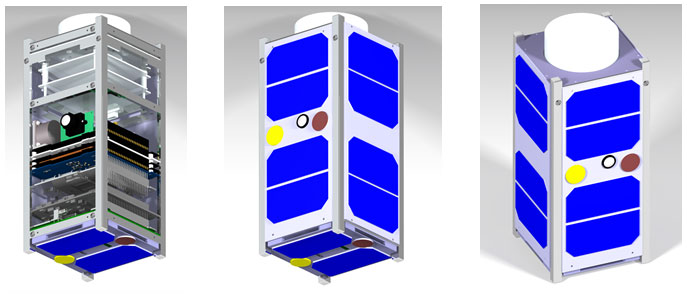

Spacecraft bus characteristics
| Subsystem | Product Reference | Company | In-House / Procurement | Technology Readiness Level |
|---|---|---|---|---|
| Payload | INMS Set | QB50 project | Delivered from VKI | 6 |
| Solar EUV | NCKU | In-House | 5 | |
| Structure | 2U ISIS CubeSat Structure | ISIS | Procurement | 9 |
| On Board Computer | Nanomind A712D | GomSpace | Procurement | 9 |
| Attitude Determination and Control | QB50 full ADCS suite | Surrey Space Center | Procurement | 6 |
| Electrical Power | P31u | GomSpace | Procurement | 9 |
| Communication | TRXVU | ISIS | Procurement | 7/8 |
| AntS | ISIS | Procurement | 9 | |
| Thermal | N/A (Passive control) | N/A | N/A | N/A |

